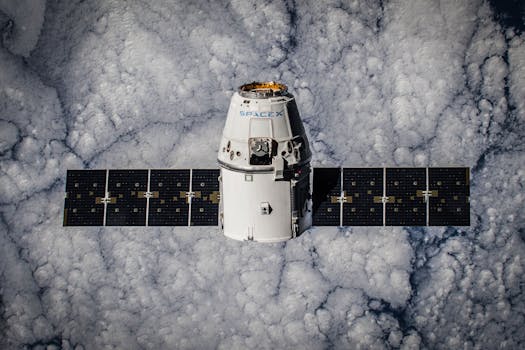
The Future of Satellites: Revolutionizing Global Communication and Exploration
The future of satellites is poised to revolutionize global communication and exploration, with advancements in technology and innovation leading to new opportunities and applications. The focus keyword, Future of satellites, is at the forefront of this revolution, as scientists, engineers, and industries work together to develop and launch new satellite systems that will transform the way we live, work, and communicate.
One of the most significant developments in the future of satellites is the emergence of small satellite technology. Small satellites, also known as smallsats, are compact, lightweight satellites that are designed to be launched into orbit at a lower cost than traditional satellites. These satellites are equipped with advanced technology and sensors, allowing them to collect and transmit data on a wide range of applications, including weather forecasting, Earth observation, and communication.
Another area of innovation in the future of satellites is the development of satellite constellations. Satellite constellations are networks of satellites that work together to provide global coverage and connectivity. These constellations are designed to provide high-speed internet access, navigation, and communication services to remote and underserved communities around the world. Companies such as SpaceX, Amazon, and OneWeb are leading the charge in developing satellite constellations, with plans to launch thousands of satellites into orbit over the next few years.
Advancements in Satellite Technology
Advances in satellite technology are driving the future of satellites, with innovations in areas such as propulsion, power, and communication systems. New propulsion systems, such as electric propulsion and advanced ion engines, are allowing satellites to travel farther and faster than ever before. Advances in power systems, such as solar panels and fuel cells, are providing satellites with the energy they need to operate for extended periods of time. And new communication systems, such as laser communication and quantum communication, are enabling satellites to transmit data at higher speeds and with greater security.
The future of satellites is also being shaped by the development of new materials and manufacturing techniques. Advanced materials, such as carbon fiber and nanomaterials, are being used to build lighter, stronger, and more durable satellites. And new manufacturing techniques, such as 3D printing and additive manufacturing, are allowing satellites to be built more quickly and at a lower cost. These advancements are enabling the development of new satellite applications, such as satellite-based solar power and satellite-based Earth observation.
Applications and Opportunities
The future of satellites is creating new opportunities and applications across a wide range of industries, from communication and navigation to Earth observation and space exploration. Satellite-based communication systems are providing high-speed internet access and connectivity to remote and underserved communities, while satellite-based navigation systems are enabling precise location and timing services. Satellite-based Earth observation systems are monitoring the environment, tracking climate change, and providing critical data for weather forecasting and disaster response.
The future of satellites is also enabling new opportunities for space exploration and development. Satellite-based systems are providing critical support for space missions, from navigation and communication to propulsion and life support. And satellite-based applications, such as satellite-based solar power and satellite-based resource utilization, are enabling the development of new space-based industries and applications.
Challenges and Limitations
Despite the many opportunities and advancements in the future of satellites, there are also challenges and limitations that must be addressed. One of the most significant challenges is the growing problem of space debris, which is threatening the safety and sustainability of satellite operations. The increasing number of satellites in orbit is also creating concerns about congestion and interference, which could impact the performance and reliability of satellite systems.
Another challenge is the need for greater international cooperation and regulation, to ensure that the benefits of satellite technology are shared equitably and that the risks are mitigated. The development of new satellite applications and services is also raising concerns about privacy, security, and ethics, which must be addressed through the development of new policies and regulations.






